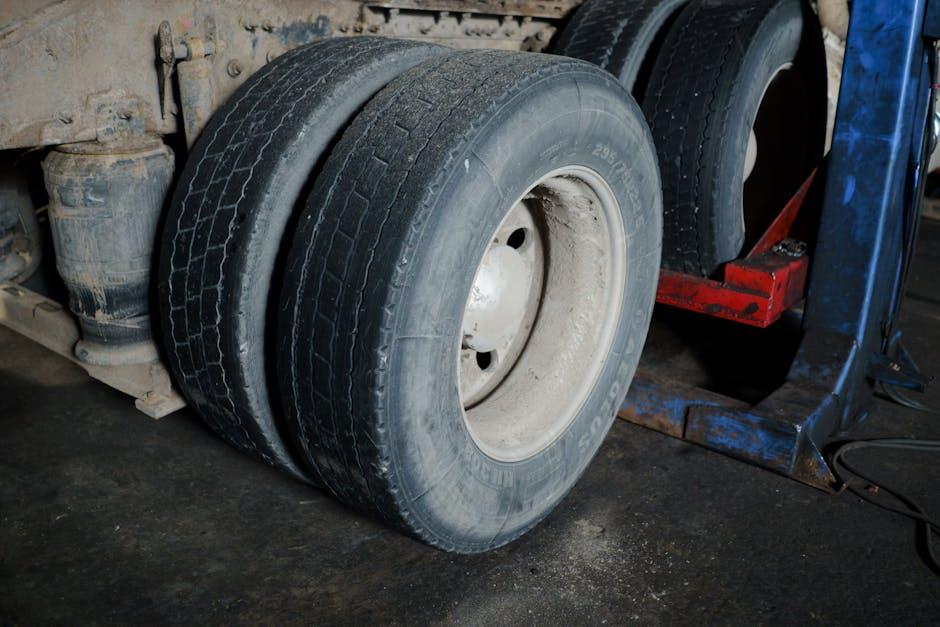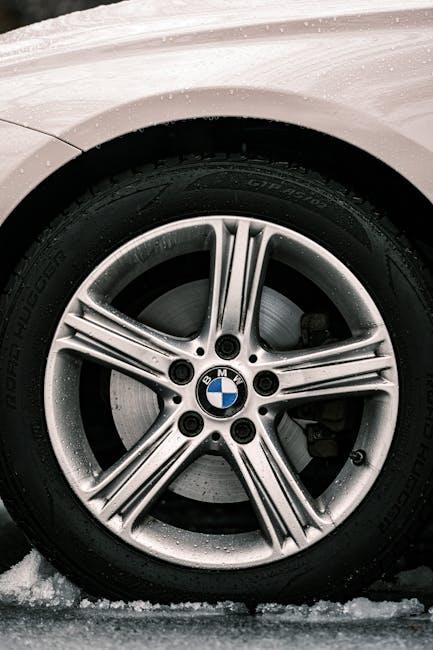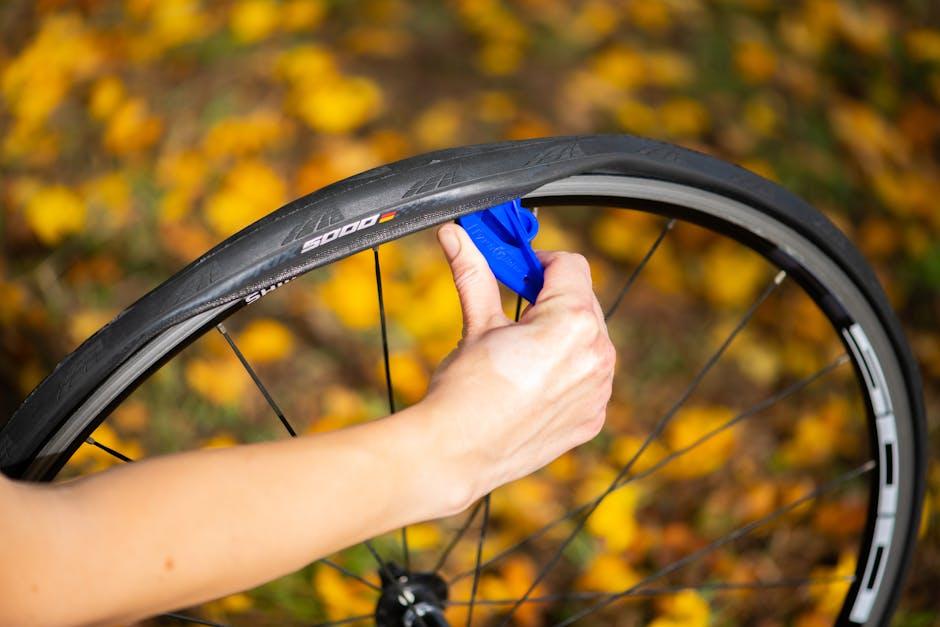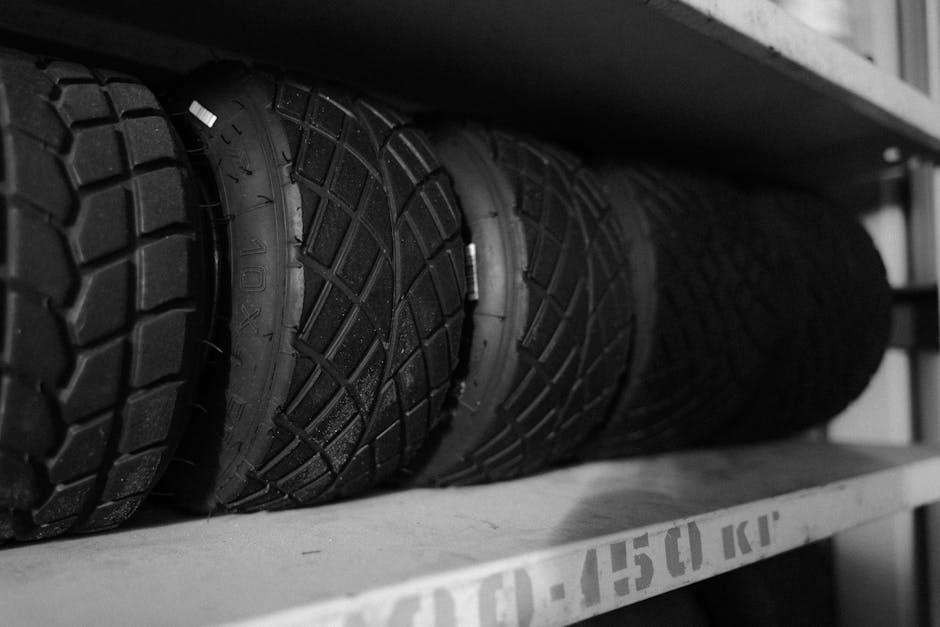As the seasons shift and the roads transform beneath our wheels, the importance of maintaining your tires cannot be overstated. Tires are the only contact point between your vehicle and the ever-changing terrain, making their care essential for safety, performance, and longevity. Whether you’re preparing for the icy grip of winter or the warm embrace of summer, adopting a seasonal tire maintenance routine can save you from unexpected troubles and costly repairs. In this article, we’ll explore practical tips to keep your tires in top shape, ensuring a smooth and secure ride all year round.
Table of Contents
- Preparing Your Tires for Seasonal Changes
- Inspecting Tire Tread and Wear Patterns
- Maintaining Proper Tire Pressure Throughout the Year
- Choosing the Right Tires for Winter and Summer Conditions
- Balancing and Aligning Tires for Optimal Performance
- Storing Off-Season Tires Safely and Effectively
- Q&A
- Future Outlook

Preparing Your Tires for Seasonal Changes
As temperatures begin to shift, it’s crucial to adapt your tires to the new conditions. Start by inspecting the tire tread depth—adequate grip is essential for safety on wet or icy roads. If the tread has worn down past the recommended level, it’s time to invest in new tires. Additionally, don’t forget to check the tire pressure regularly. Colder air contracts, causing pressure to drop, which can lead to uneven wear and reduced fuel efficiency. Use a reliable gauge and inflate your tires according to the manufacturer’s specifications to maintain optimal performance.
Switching between seasonal tires offers distinct advantages in handling and longevity. Consider keeping a separate set of winter tires if you experience harsh winters or snow frequently, as their specialized rubber compounds stay flexible in low temperatures and improve traction. Conversely, summer or all-season tires should be used when roads clear and temperatures rise to ensure better heat resistance and control. Below is a quick guide to help you decide when to make the switch:
| Season | Ideal Tire Type | Temperature Range |
|---|---|---|
| Winter | Winter Tires | Below 45°F (7°C) |
| Summer | Summer Tires / All-Season | Above 45°F (7°C) |
- Clean your tires: Remove dirt and debris before storing or switching them out.
- Balance and Align: Ensure your wheels are balanced and properly aligned for even tire wear.
- Monitor Wear: Rotate tires regularly to extend life and maintain consistent performance.

Inspecting Tire Tread and Wear Patterns
Regularly examining your tires for tread depth and unusual wear is crucial to maintaining safety and performance throughout the year. Uneven wear patterns can indicate alignment issues, improper inflation, or suspension problems that demand immediate attention. Start by visually inspecting the grooves and edges of the tire treads, looking for signs such as bald spots, cracks, or embedded debris. A simple tool like a tread depth gauge or even a penny can help measure if the tread still meets the minimum safe depth of 2/32 inches.
Pay attention to specific wear patterns, as these can reveal underlying mechanical concerns:
- Feathering: A noticeable smoothness or scalloping on the tread edges often signals suspension or alignment problems.
- Center Wear: Excessive wear along the middle of the tire suggests over-inflation, which reduces traction and tire life.
- Edge Wear: Worn edges can be a result of under-inflation or aggressive cornering habits.
| Wear Pattern | Possible Cause | Recommended Action |
|---|---|---|
| Feathering | Misalignment | Wheel alignment check |
| Center Wear | Over-inflation | Adjust tire pressure |
| Edge Wear | Under-inflation | Inflate tires properly |

Maintaining Proper Tire Pressure Throughout the Year
Consistently checking and maintaining the right tire pressure is essential for safe driving and extending the life of your tires. Changes in temperature throughout the seasons can cause fluctuations in tire pressure, often resulting in underinflated or overinflated tires. To combat this, incorporate a monthly pressure check routine using a reliable tire gauge, especially before long trips or when shifting from summer to winter months. Remember, the recommended pressure levels can usually be found on a sticker inside the driver’s door or in the owner’s manual.
For effective tire pressure management:
- Always check tires when they’re cold, as heat from driving can give inaccurate readings.
- Adjust pressures gradually in small increments rather than large jumps.
- Keep a tire inflator handy in your vehicle for quick top-ups.
- Inspect your tires for uneven wear patterns that might indicate pressure issues.
| Season | Ideal Tire Pressure Adjustment |
|---|---|
| Summer | +2 PSI |
| Winter | -2 PSI |
| Spring/Fall | Standard PSI |

Choosing the Right Tires for Winter and Summer Conditions
Selecting the perfect set of tires tailored for each season not only guarantees safer travels but also enhances vehicle performance and longevity. For winter, opt for tires crafted with a softer rubber compound that stays flexible even in frigid temperatures, paired with deeper treads designed to grip icy and snowy roads. In contrast, summer tires flaunt a harder rubber and shallower grooves, ideal for dry or wet conditions, ensuring strong traction and stability on hot pavements. Remember, the right tire choice involves understanding local climate nuances and driving habits to maintain optimal control and efficiency year-round.
To simplify your decision-making, here’s a quick reference highlighting key characteristics for seasonal tires:
| Feature | Winter Tires | Summer Tires |
|---|---|---|
| Rubber Compound | Soft & flexible at low temps | Harder, withstands heat |
| Tread Pattern | Deep grooves with sipes | Shallow grooves for grip |
| Best Conditions | Snow, ice, slush | Hot, dry, wet asphalt |
| Performance Benefit | Improved traction & braking | Enhanced cornering & efficiency |
Careful consideration of these factors allows drivers to align tire selection with seasonal demands, maximizing safety and tire lifespan without compromise.

Balancing and Aligning Tires for Optimal Performance
Properly balanced and aligned tires are fundamental for ensuring your vehicle delivers a smooth, safe ride and maximizes tire lifespan. When tires are out of balance, you may notice vibrations in the steering wheel or seats, which can lead to premature wear on suspension components and uneven tire wear. Alignment issues, on the other hand, cause your vehicle to pull to one side and result in uneven tread patterns that compromise traction and handling. Regular checks help maintain not only a comfortable driving experience but also improve fuel efficiency and overall vehicle safety.
Incorporate these simple steps as part of your seasonal maintenance routine to keep your tires in top condition:
- Check tire balance: Visit a professional service center to have your wheels balanced, especially when you notice unusual vibrations or after installing new tires.
- Schedule wheel alignments: Ideally once a year, or after any major impact such as potholes or curbs to maintain proper steering response.
- Monitor tread wear patterns: Uneven tread can signal alignment or balance issues needing immediate attention.
| Maintenance Check | Recommended Frequency | Key Benefit |
|---|---|---|
| Tire Balancing | Every 5,000 – 6,000 miles | Reduces vibrations & improves tire wear |
| Wheel Alignment | Annually or after impact | Enhances steering control & safety |
| Tread Inspection | Monthly | Detects early wear patterns |

Storing Off-Season Tires Safely and Effectively
To preserve the integrity of your tires during their dormant months, prioritizing cleanliness and a controlled environment is essential. Before stashing away your off-season tires, give them a thorough wash to eliminate dirt, brake dust, and road grime, which can degrade the rubber over time. Make sure they are completely dry to prevent moisture-induced damage such as mold or rust on the rims. Store them in a cool, dry spot away from direct sunlight, heat sources, or ozone-producing appliances like generators or furnaces, which can accelerate tire aging.
Proper positioning while storing also plays a crucial role in maintaining tire shape and performance. If the tires are still mounted on rims, stacking them horizontally can prevent unwanted distortion. For unmounted tires, stand them upright and rotate occasionally to avoid flat spots. Utilize the following guidelines for optimal tire storage:
- Clean and dry before storage
- Store in airtight bags or tire covers to limit exposure to air and moisture
- Keep away from sunlight and sources of heat or ozone
- Maintain a stable temperature environment
- Check periodically for any signs of deformation or damage
| Storage Type | Recommended Position | Notes |
|---|---|---|
| Mounted Tires | Stack Horizontally | Prevents rim damage and maintains tire shape |
| Unmounted Tires | Stand Upright | Rotate monthly to avoid flat spots |
Q&A
Q&A: Seasonal Tire Maintenance Tips
Q1: Why is seasonal tire maintenance important?
A1: Tires are the only contact point between your vehicle and the road, so keeping them in optimal condition is crucial. Seasonal changes bring varied weather conditions—like snow, rain, heat, or cold—that affect tire performance and safety. Proper maintenance ensures better traction, longer tire life, and safer driving all year round.
Q2: How often should I check my tires when seasons change?
A2: It’s wise to inspect your tires at the start of each season and periodically throughout. Before winter, check for tread depth and switch to winter tires if needed. In spring and summer, inspect for wear and balance, ensuring they’re ready for dry or wet conditions ahead.
Q3: What’s the best way to store off-season tires?
A3: Store tires in a cool, dry, and dark place, away from direct sunlight and heat sources. Keep them in airtight bags or tire totes to prevent exposure to oxygen and ozone, which can dry out rubber. Storing tires upright or stacking them properly also helps maintain their shape.
Q4: Can I just rotate my tires seasonally instead of changing them?
A4: Rotating tires is essential, but seasonal tire types—like switching between all-season and winter tires—offer specific advantages in traction and safety. While rotation extends life, changing tires seasonally selects the right tread design and rubber compound for the weather conditions.
Q5: How do I know when my tires need replacing?
A5: Look for tread wear indicators, cracks in the sidewall, bulges, or uneven wear patterns. A quick test is the penny test—insert a penny into your tread grooves with Lincoln’s head upside down; if you see the top of his head, it’s time for new tires. Also, if your vehicle feels less stable or noisy, it might be a sign.
Q6: Should tire pressure be adjusted seasonally?
A6: Absolutely. Temperature changes affect tire pressure—cold air contracts and hot air expands, leading to under-inflation or over-inflation. Check and adjust tire pressure monthly and whenever the seasons change to maintain optimal contact with the road and fuel efficiency.
Q7: Are all-season tires a good compromise?
A7: All-season tires are designed to perform adequately in a variety of conditions but don’t excel in extreme weather. For mild climates, they’re practical. However, if you experience harsh winters or hot summers, switching between seasonal tires provides better performance and safety.
Q8: What other tips help prolong tire life through the seasons?
A8: Regularly clean your tires to remove debris and salts, especially after winter. Avoid sudden braking and sharp turns. Keep your vehicle’s alignment and suspension in good condition, and balance your tires during installation or maintenance. These practices support even wear and enhance tire longevity.
By embracing seasonal tire maintenance, you not only protect your investment but also ensure a safer journey no matter the weather. Stay ahead of the seasons, and let your tires do the gripping with confidence!
Future Outlook
As the seasons shift and the roads transform beneath our wheels, taking a moment to care for your tires ensures every journey is safe and smooth. By embracing these seasonal tire maintenance tips, you’re not just protecting your vehicle—you’re investing in peace of mind, mile after mile. So, whether winter’s chill or summer’s heat is on the horizon, let your tires be ready for the ride ahead. After all, every great adventure begins with a steady, confident grip on the road.

